Journal of Hotel and Business Management
Open Access
ISSN: 2169-0286
+44 1478 350008
ISSN: 2169-0286
+44 1478 350008
Review Article - (2021)Volume 10, Issue 12
This paper present an overview of different methods from past that have been used around the business to tackle the idea of improving business using and adopting various technology which are available to us now a days. Also will insights the future approach and innovative idea generation to enhance the management and better use of making a brave combination of analytical business approach and technological revolution toward the further time may be next 50 years or so. Moreover the evolution of potential, long-term impact of this extra ordinary but simple and useful principle and practices in an intellectual context where anti-realist ontologies and epistemologies have been dominant. Also, I will try to explain the several contribution factors as promoting innovation, research and development, recognizing the value of organizational innovation, managing innovations and technology, dynamics of latest innovation, direction to use all of them in potential and effective/profitable manner. Also try to emphasis on the current working areas in the same immerging field with in the public and private, small and large organizations. How this thing is actually impacting the current technological era for business and also what drastic impacts we can see in near future. In discussing high priority mitigation of business adopting technology as a key factor making more profit and valuable remarks on employee, labor, managers and business itself. Universal tendencies and temporal deviation from this change will lead to different performances that we already have in the place to use for.
Technological innovations, Process innovation, Basic strategy, Work organization, Powerful technology, Decision making, Creative destruction
The Concise Oxford Dictionary (1995) defines ‘turn’ as ‘to invert or reverse’ and ‘to give a new direction to’ or ‘adopt a new direction’. When it’s come to merge technology in business on the first go this sound so irrelevant but try to give it a thought and we can identify the potential are to work for each and every time. Because there is no way have ever identified where somebody can run a business with getting in the technical innovation have save the economy for the organization. Thinking about 20 years ago, we only had some developing technical era, when everyone was trying to innovate something but they did not has any idea how to put things into action in real world. They have developed so many great ideas and never get chance to appreciate in the business world, changes were never accepted was one of the biggest reason I can think of from that time. Looking in to current scenario things however have been changed a lot, now there is a platform called ”technology management” which is not just a platform but most considerable and adopted stage within all the organization. The reason becoming they have now knowledge, understanding, ability and courage to accept challenges and as a group find out the solution which I personally appreciate a lot having the same background.
In the last 25 years businesses of all kinds have looked to increased integration between functions to contribute to the overall prosperity of the organization. Technology has a distinct place in this discussion for two disparate reasons. First, technology is a vital contributor to ownership-specific competitive advantage, whether the firm is multinational or domestic. Second, the increasing rate of change in domestic and international competitive environments particularly since the early 1980s, has led to greatly increased focus on process technology, product technology and information technology. The purpose of this paper is to explore the developing literature in the management of technology, to assess the direction of recent developments in our understanding of the topic, and to attempt to predict future trends and determinants.
Technology is the daughter of science and techniques [1]. Yet, it cannot be reduced to the simple use of scientific discovery nor is it just implementation of technical empiricism. Digging in to the subjects leads us to be better using the resources and talent we already possess within the organization. Also should give some thoughts on the topics I think can be best for future of business innovation using technology itself.
• Technology being omnipresent reality of achievement and threats.
• How difficult it is to manage discontinuous technology change.
• Technology road mapping.
• Evaluating and introducing disruptive technologies.
• Technology transfer 6 competence management with the opportunity landscape [2].
J. K. Galbraith provides a clear definition of technology as ‘the systematic application of scientific or other organized knowledge to practical tasks’. Develop this view thus: ‘Technology is both a body of knowledge concerned with the solution of practical problems - what we might term ‘know-how’ - and also the tools and artefacts which are used to achieve those solutions: it is both the software and hardware’. Freeman provides a fuller definition and distinguishes between innovation and technological innovation thus: ‘Strictly speaking, technology is simply a body of knowledge about techniques, as the word itself implies. But it is frequently used to encompass both the knowledge itself and the tangible embodiment of that knowledge in an operating system using physical production equipment. ‘Technical innovation’ or simply ‘innovation’ is used to describe the outline and spread of new and improved products and processes in the economy and ‘technological innovation’ to describe advances in knowledge.’
Additional factor I can think as of 2021, Globalization, merging of different venture capital has already putting incredible efforts in the area of innovation of business. The proper staggery always needed for better implementation of some idea, thoughts, and knowledge. “it takes lots of effort to change the whole structure of organization” but we are not talking about change here, it’s only about adopting new technology and having that dedication for the further work and new challenges. The invention process covers all the efforts aimed at creating [3].
If i focus more on what is tech and innovation in real word, i would like to use this as a definition. Technology is a replicable artifact with practical application, and the knowledge that enables it to be developed and used. Technology is manifested in new products, processes, and systems, including the knowledge and capabilities needed to deliver functionality that is reproducible. Innovation is much more than invention the creation of a new idea and its reduction to practice and it includes all the activities required in the commercialization of new technologies [4].
Essentially, innovation is the successful commercial exploitation of new ideas. It includes the scientific, technological, organizational, financial, and business activities leading to the commercial introduction of a new (or improved) product or service.
From these definitions we can see that technological innovation involves more than the successful application of new ideas to products and services; it often requires changes in the organization and strategies that support it. As we shall see from the following case studies and Chapter 2, technological innovation involves addressing a wide range of issues and activities that compound the challenges in managing it, add to its risk and uncertainty, and make it difficult to develop generic recipes for its success.
It is the very difficult of managing technological innovation that makes it such a source of competitive advantage. If every firm could do it successfully, it would not provide a source of relative competitive advantage. As Frederick Gardner Cottrell of the University of California and a founder of the US Research Corporation said in 1912: ‘[A] number what is the management of technological innovation? 3 of meritorious patents given to the public absolutely freely by their inventors have never come upon the market chiefly because “what is everyone’s business is nobody’s business” [5].
The effects of technology over the course of human history are well documented. What i can see from past is there are 3 different era
• Agricultural
• Industry
• Digital
I come from industry and digital era so I have more emphasis on that topic. They all have different way of representing technology and innovation with respect to their field and idea generations. That is leading us to think more creatively and modernly about the problem and variations. Adopting those changes and accepting them as a challenge and motivate ourselves toward them is been a key of innovative success for organization. Transition of technology forced us to move from unpretentious to digitalization. That’s how we grow our business and motivate to adopt technology as innovation [6].
Digging in to past make us realize that if you don’t go with flow definitely end up being in a cave forever. Someone must have started with one new idea and then he ended up making it more worth for their business, how it was started. And for making it work all the time we have to keep doing it. That’s how it can turn into capital revolution. Future can be so innovative we just need to give a right platform to the right ideas. Giving some one platform can create a whole new perspective of business culture. Digital technology is diffusing more and more in to the global economy. Because of this digitization, machines are becoming more intelligent than human doing task was once only done by manpower. This change leading vast difference in production and process organization to change their product to new and effective way of representational and services. Can be a major role in adapting new trials and modernization.
Leading way of changes
• Primarily, technology affects a multinational’s ability to communicate with customers. In today’s busy business environment, it is necessary for employees to interact with clients quickly and clearly. Websites allow customers to find answers to their questions after hours. Fast shipment options allow businesses to move products over a large geographic area. When customers use technology to interact with a business, the business profits because better communication creates a stronger public image.
• Technology also helps a business understand its cash flow needs and preserve precious resources such as time and physical space. Warehouse inventory technologies let business owners understand how best to manage the storage costs of holding a product. With proper technology in place, executives can save time and money by holding meetings over the Internet instead of at corporate headquarters.
• Technology creates a team dynamic within a business because employees at different locations have better interactions. If factory managers can communicate with shipment coordinators at a different location, tensions and distrust are less likely to evolve. Cliques and social tensions can become a nightmare for a business; technology often helps workers put their different backgrounds aside.
• Most businesses of the modern era are subject to security threats and vandalism. Technology can be used to protect financial data, confidential executive decisions and other proprietary information that leads to competitive advantages. Simply put, technology helps businesses keep their ideas away from their competition. By having computers with passwords, a business can ensure none of its forthcoming projects will be copied by the competition.
• A business that has the technological capacity to research new opportunities will stay a step ahead of its competition. For a business to survive, it must grow and acquire new opportunities. The Internet allows a business to virtually travel into new markets without the cost of an executive jet or the risks of creating a factory abroad.
• Dealing with new technology can conjure up the saying, “You can recognize a pioneer by the arrows in his back.” The advantages that come with very new technology may be accompanied by serious risks. Too often, tech vendors rush cutting-edge products to market with inadequate testing and support. Early adopters may be stuck with tech that doesn't meet expectations.
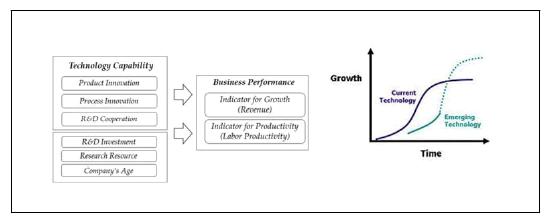
These pictures are very evidently showing the meaning and how this enactment is changing the world and what belongings it can have in future business perspectives from growing too well gainful organization. “Running with time can make you fly the sky without any boundaries around you”
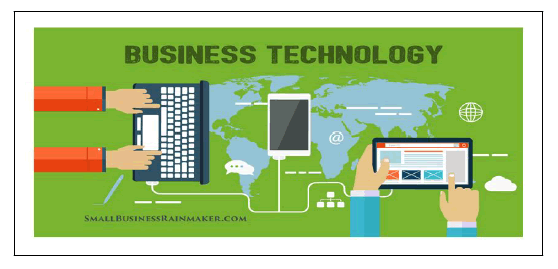
This can explain the way of looking towards the tech for management, its look so simple but at the same time it is a delicate process at the end it all depends on how vigorously you are able to handle it and make it work for all of your committee members within the organization. Connecting all of them with new technology and having all of them on same page is the key, can take so much more efforts, try & error, ups & down to make it progress and full time adoption for the business.
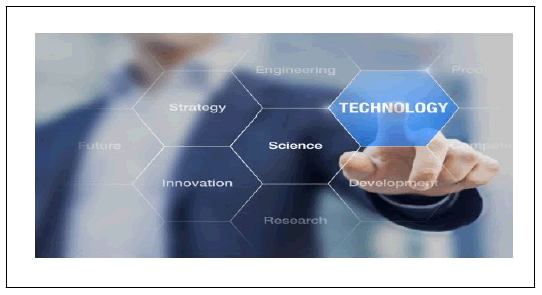
This image is explanation of the future work itself. What are the parameters we need to maintain simultaneously with the technology are innovation, science, strategy, engineering, development, research, compliance, productivity. This all comes to gather and create a platform called organization. So need to have each pillar well development to make it work and convert it in to success and satisfaction for employee and organization.

Showing the results of getting whole world together in terms of business using technological innovation, making smart decision, taking up all challenges and growing day by day using all of the resources available.
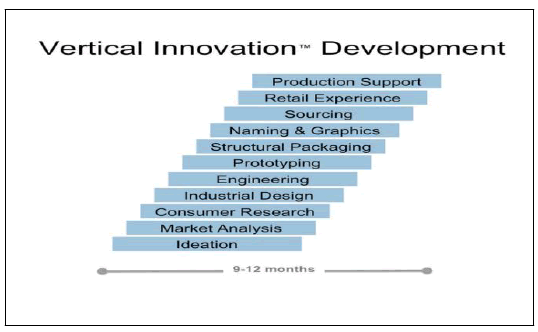
The vertical structure of the industry (i.e., vertical integration vs. vertical separation) is endogenously determined by an integration game modeled as a sale auction between the downstream firms. If the gain from vertical integration exceeds a fixed integration cost, the upstream monopolist calls the downstream firms for offers in order to integrate one of them. Then, competition between the downstream firms in the integration game allows the upstream monopolist to appropriate more than the full surplus from integration, and reap most of the profit created in the final product market. Therefore, vertical integration is a threat to the downstream firms at the initial stage of the game, when they can invest in R&D to differentiate products.
Why the right process can make all the difference: You might even decide you can just jump into your project right away, without defining a clear process to develop your ideas. But designing and successfully implementing a process is no small task. When it is done well, the rewards are significant: faster to market by about 30%, higher success rates, and more projects on time & on target. As many of the top innovation writers have noted, having world-changing ideas isn’t enough for a successful project. You also need to be deliberate about how you innovate. Knowing about the pros and cons of the different innovation methods out there will help you and your team to get better results, and will help you work towards successful innovation. It can also include Design innovation, lean startup model, Design sprints, Business model innovation, agile methodology, Growth and Scaling. They all can have deep understating and literature to make it more effective and easy to recognize.
More certainty over what to expect
Choosing the right process makes innovation management a lot easier.
With the right process and frameworks in place, your innovation projects will run a lot more smoothly. Even better, your people won’t have to deal with as much ambiguity. If your thinkers know what to expect, they won’t spend as much time dealing with project administration and management, and they’ll have more time to do their most innovative work. For example, if you take the time at the start of the project to plan out a series of design sprints, including the timing, task allocation, and expected milestones, your team will know exactly what to expect from the process. This way, you’ll be able to identify when something has gone wrong, or where you need to boost your efforts in certain areas to stay on track.
Faster development of new product: Having the right processes in place makes deciding a lot simpler and faster. After all, a confused or disorganized innovation process not only stresses people out - it also slows down the product development cycle. Instead, by taking the time to consider and choose an innovation process, you can boost the speed and efficiency of your product development. This isn’t just great for your new product lines: having exciting new customer offerings helps to drum up new business, and can generate excitement about your existing products, too.
Putting the right people to work
One of the hardest things when managing exciting new ideas? Knowing how to structure your innovation team. As any manager will tell you, you can have the most creatively talented and driven people on the planet, but if you’re using a confusing or disjointed innovation process, they won’t be able to do their best work. When businesses don’t commit to a formal innovation process, innovation projects tend to be assigned to whoever has spare time, or whoever comes to mind first. While you might kick some goals using a system like this, you won’t use your people to their full potential. Instead, choosing the right innovation process will help you to be more systematic about assigning tasks. This way, you can put the right thinkers in the right roles, and will make sure you draw on their talents and expertise at the right time. With the right process, your innovators will know exactly what they need to do, and the milestones they need to hit. Even better, your project managers will know they’ve got the right people doing the right work. Win-win for everyone!
Greater productivity and output: The right process can help you develop innovative ideas a lot faster, helping to drive your productivity and output. In innovation, knowing how to select the right ideas is key. Having an established process in place will help you to be able to choose the right ideas and channel your efforts into the areas with the greatest yield for your business Your innovation program will start to get better results if you develop a working knowledge of the different methods and know how to use them. For example, if you develop a familiarity with agile methodology and design thinking, you’ll know when - and how - to use these processes. This isn’t just a great way to improve the output of your existing business units - it’s also an excellent way to boost your overall ideation.
Access to a broader range of new ideas: Finally, knowing when to use different innovation processes can also unlock access to a broader range of ideas, no matter which type of innovation you’re focusing on. Whether you’re talking about open innovation, traditional R&D, or even co-creation alongside your fans and customers, idea generation is a lot easier once you have the right process to guide your thinking.
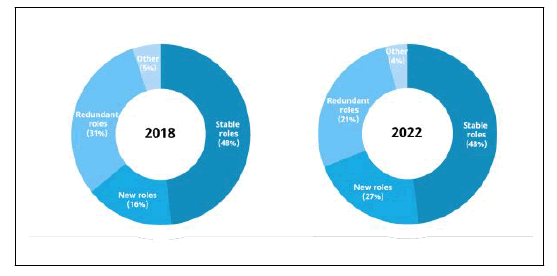
Citation: Rajput K (2021) Managing Technology & Innovation: Hard-Hitting but Innovative Slant on the Road to Corporate Leadership. J Hotel Bus Manage. 10:076.
Received: 02-Dec-2021 Accepted: 10-Dec-2021 Published: 22-Dec-2021
Copyright: © 2021 Rajput K. This is an open-access article distributed under the terms of the Creative Commons Attribution License, which permits unrestricted use, distribution, and reproduction in any medium, provided the original author and source are credited.